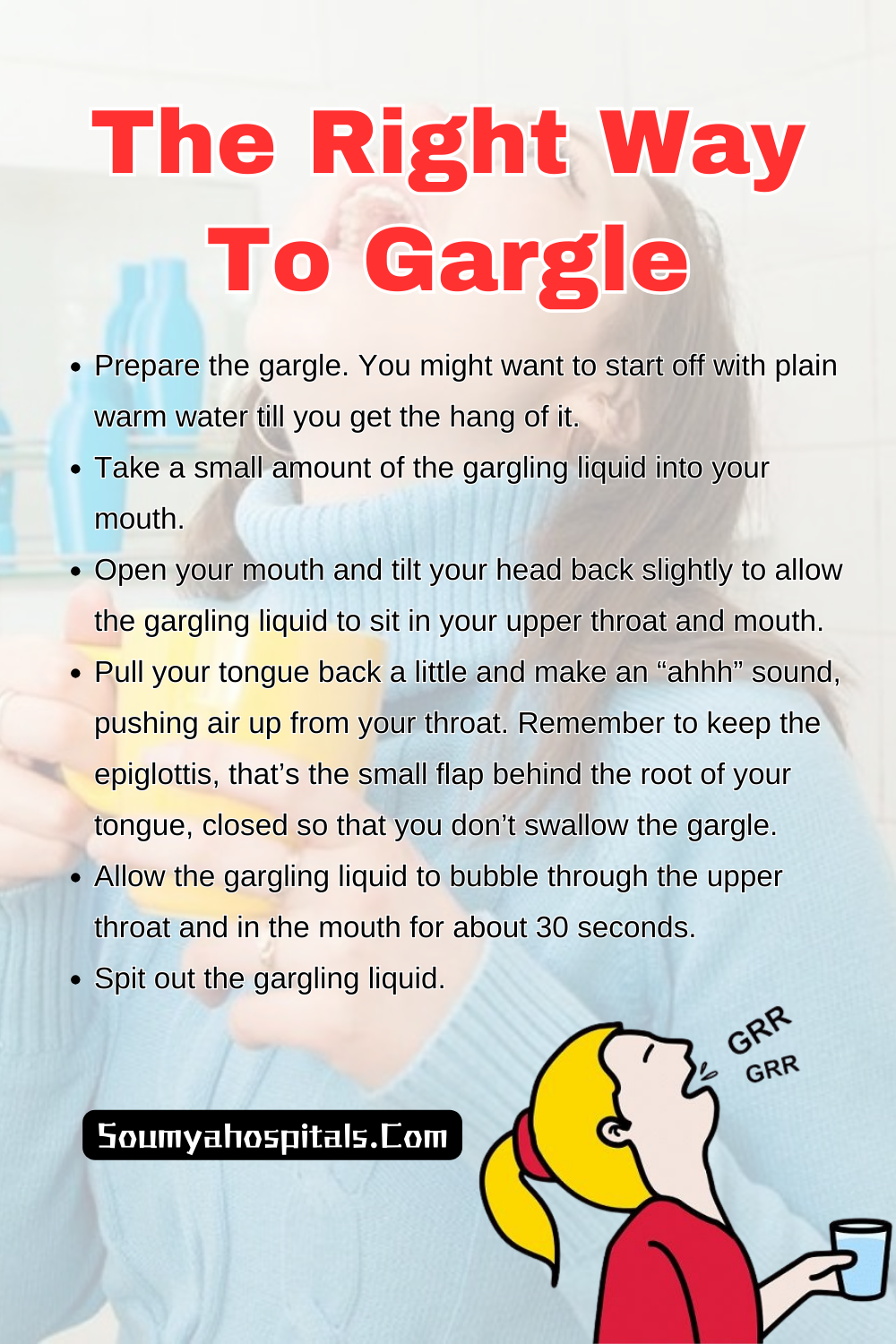We’ve all suffered through a sore throat at some point or the other. And if you have a child in school, you’ve certainly had to worry about colds and sore throats. In fact, about ten percent of children who go to the doctor each year have a sore throat! What makes it worse is that most sore throats are caused by viral infections that cannot be treated – the virus has to be left to run its course. Davidson, Tish. Gale Encyclopedia of Children’s Health: Infancy through Adolescence. Thomson Gale. 2006. So what do you do when your throat’s all sore and scratchy? Or when you’re dealing with a sick and cranky child? Could something as simple as gargling keep you from catching a cold and soothe a sore throat? Both ancient sciences and Western medicine say that it sure can!
Also Check: 4 Ways Of Drinking Water The Right Way
The Benefits Of Gargling

Gargling with warm salt water must have been your mom’s go-to remedy when your throat felt tight and scratchy as a child. But did you know that gargling is also traditionally practiced in some parts of the world for hygiene? For instance, along with taking their shoes off and washing their hands, Japanese children are taught to gargle when they come into the house from outside. The idea is that just as washing your hands cleans them, gargling gets rid of the germs in your throat. Ohnuki-Tierney, Emiko. Illness and culture in contemporary Japan: An anthropological view. Cambridge University Press, 1984. Ayurveda, the ancient Indian system of holistic medicine, too recommends that you make gargling a part of your morning hygiene routine. Some practitioners suggest that you gargle with substances which have a bitter essence (like triphala) boiled in water. Ayurveda: Its Principles & Philosophies by Acharya Bālakr̥shṇa, Diamond Pocket Books (P) Ltd. 2006.
Gargling treatments like oil pulling and oil swishing are also recommended in Ayurveda, but, remember, this is a modified version of what we usually understand by “gargling.” In oil pulling (gandusha) the gargle completely fills the mouth and is held there for some time before being spit out. This practice may cause your eyes or nose to run. In oil swishing (kavala) the gargle is swished around in the mouth for a while before being spat out. Ayurveda also considers the constitution of the individual before prescribing a treatment. Depending on the oil being used, these treatments are said to cure about thirty systemic diseases ranging from migraines to diabetes to asthma. Gargling treatments are also recommended in Ayurveda for strengthening teeth, gums, and the jaw as well as preventing tooth decay, bad breath, bleeding gums and dry lips. Rastogi, Snajay. Evidence-Based Practice in Complementary and Alternative Medicine: Perspectives, Protocols, Problems and Potential in Ayurveda. Springer Science & Business Media. 2012.
So does gargling actually work? Research shows that gargling at least three times a day with water is effective in preventing upper respiratory tract infections among healthy people. Satomura, Kazunari, Tetsuhisa Kitamura, Takashi Kawamura, Takuro Shimbo, Motoi Watanabe, Mitsuhiro Kamei, Yoshihisa Takano, Akiko Tamakoshi, and Great Cold Investigators. “Prevention of upper respiratory tract infections by gargling: a randomized trial.” American journal of preventive medicine 29, no. 4 (2005): 302-307. Gargling can loosen mucus, and when this mucus is washed away it can take irritants like allergens, fungi, and bacteria with it. Blum, Esther. The Eat, Drink, and Be Gorgeous Project: Three Months to a New You. Chronicle Books. 2012.
Preparing A Gargle
You can add several natural substances with medicinal value to the water for gargling.
- The National Institutes of Health (NIH) recommends gargling several times a day with warm salt water (1/2 tsp of salt in 1 cup water) to soothe a sore throat. Strep throat, US National Library of Medicine. A saline solution can draw excess fluid from inflamed tissues and relieve pain. Blum, Esther. The Eat, Drink, and Be Gorgeous Project: Three Months to a New You. Chronicle Books. 2012.
- Gargling with warm salt water and slippery elm bark, wild cherry, and mallow can help with laryngitis. Swain, Liz . Gale Encyclopedia of Alternative Medicine. Thomson Gale. 2005.
- One study found that people who gargle with tea catechin extracts have a lower incidence of influenza infection. Yamada, Hiroshi, Norikata Takuma, Takashi Daimon, and Yukihiko Hara. “Gargling with tea catechin extracts for the prevention of influenza infection in elderly nursing home residents: a prospective clinical study.” Journal of Alternative & Complementary Medicine 12, no. 7 (2006): 669-672.
- You can prepare a gargle by simmering fenugreek seeds in water for about twenty minutes and straining it after it cools down to a comfortable temperature. This is recommended in Ayurveda for a sore throat or mouth ulcers. Manohar, Murli. Ayurveda for All. V& S Publishers. 2011.
The Right Way To Gargle

Here are the six steps to gargling right.
- Prepare the gargle. You might want to start off with plain warm water till you get the hang of it.
- Take a small amount of the gargling liquid into your mouth.
- Open your mouth and tilt your head back slightly to allow the gargling liquid to sit in your upper throat and mouth.
- Pull your tongue back a little and make an “ahhh” sound, pushing air up from your throat. Remember to keep the epiglottis, that’s the small flap behind the root of your tongue, closed so that you don’t swallow the gargle.
- Allow the gargling liquid to bubble through the upper throat and in the mouth for about 30 seconds.
- Spit out the gargling liquid.
So how often should you gargle? Gargling three times a day has a protective effect against colds. But if you already have a sore throat, gargling more frequently can provide some relief.
If you’re planning on teaching your children to gargle, make sure they are old enough to do so without swallowing the gargle. Generally, children younger than 6 to 8 years will find it difficult to gargle properly. Whittaker, Catherine. Sore throats and halitosis. Sapa Journal, Vol 10, No 1 (2010).
Fending Off Throat Woes
Gear up for the flu season this year by learning how to gargle. Whether you decide to make it a part of your daily hygiene routine or use it to soothe a sore throat when you feel under the weather, gargling is an easy, natural way to improve your well-being.
Read More Posts:
